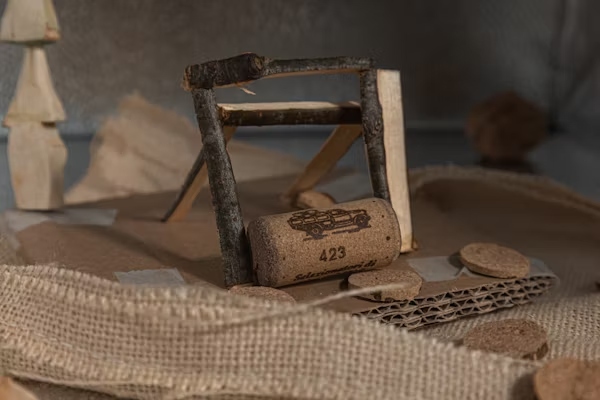In the world of craftsmanship, precision and material quality define excellence. Among the most refined materials used by artisans and designers today are Zuschneidfelle, a German term meaning cutting hides or pre-cut leather pieces. These hides have become synonymous with high-quality leatherwork, offering artisans a reliable foundation for projects that require accuracy, durability, and beauty. From luxury fashion to furniture restoration and industrial design, Zuschneidfelle stand as a benchmark for craftsmanship rooted in tradition and precision.
What Are Zuschneidfelle?
Zuschneidfelle refers to leather hides that are specifically cut or prepared for precise crafting purposes. Unlike full hides or raw skins, these materials are already processed, tanned, and cut to specific dimensions suitable for various applications. The term is widely used in the German leather industry and by artisans who demand high consistency in material quality.
The Origins and Importance of Zuschneidfelle in Leathercraft
Leather crafting has deep roots in European tradition, particularly in Germany and Italy, where precision and material excellence have long been cultural hallmarks. Zuschneidfelle evolved as a response to the growing demand for ready-to-use, high-quality leather cuts in industrial manufacturing and artisan workshops.
Historically, artisans purchased whole hides and performed the laborious cutting and preparation themselves. Over time, specialized tanneries began offering Zuschneidfelle—carefully cut hides that eliminated inconsistencies and reduced waste. This development transformed leather production by saving time while maintaining superior craftsmanship standards.
Today, Zuschneidfelle continue to be used in luxury goods manufacturing, automotive interiors, upholstery, handcrafted accessories, and fine art applications. Their reputation for precision makes them indispensable for professionals seeking premium results.
Characteristics of High-Quality Zuschneidfelle
To be classified as premium Zuschneidfelle, a hide must exhibit several essential characteristics:
-
Uniform Thickness
Consistency is key. High-quality Zuschneidfelle maintain a steady thickness across the entire surface, which ensures even stitching, stretching, and adhesion in finished products. -
Smooth Grain and Texture
The surface should be free of blemishes, scars, or irregular patterns. This visual uniformity contributes to a polished and luxurious appearance. -
Durability and Flexibility
Good Zuschneidfelle strike a perfect balance between toughness and softness. They should resist tearing while remaining pliable enough for shaping and tooling. -
Color Consistency
Especially in dyed hides, color uniformity indicates proper tanning and pigmentation. -
Sustainable Sourcing
Increasingly, manufacturers prioritize ethically sourced and eco-friendly tanned hides, making Zuschneidfelle part of the sustainable material movement.
Common Types of Zuschneidfelle
Depending on the project and desired outcome, several types of Zuschneidfelle are available:
-
Vegetable-Tanned Zuschneidfelle
Made using natural plant extracts, these hides age gracefully, developing a rich patina over time. They’re ideal for artisanal leather goods like belts, wallets, and saddlery. -
Chrome-Tanned Zuschneidfelle
Known for flexibility and color variety, chrome-tanned hides are more resistant to water and wear, making them suitable for upholstery and fashion accessories. -
Aniline and Semi-Aniline Zuschneidfelle
These represent the pinnacle of natural beauty, retaining visible grain and character. -
Embossed or Finished Zuschneidfelle
For decorative purposes, these hides may feature embossed textures, printed designs, or protective coatings for added resilience.
Applications of Zuschneidfelle
The versatility of Zuschneidfelle makes them valuable across various industries:
1. Fashion and Accessories
Designers use Zuschneidfelle to craft handbags, shoes, belts, wallets, and watch straps. Their precision cuts reduce waste and ensure that each item has a uniform texture and appearance, essential for luxury branding.
2. Furniture and Interior Design
In the furniture sector, Zuschneidfelle are favored for upholstery, cushion covers, and paneling. Their strength and aesthetic appeal add a sense of sophistication to modern interiors.
3. Automotive Industry
Luxury car interiors often feature Zuschneidfelle for seats, steering wheels, and dashboards, ensuring both comfort and durability. Their exact dimensions make them perfect for seamless fitting and stitching.
4. Artisanal Crafting
Leatherworkers and hobbyists appreciate Zuschneidfelle for smaller-scale projects such as bookbinding, leather carving, or custom tools. The hides’ consistency enables detailed craftsmanship and experimentation.
5. Industrial and Technical Applications
Beyond aesthetics, some Zuschneidfelle are used in industrial settings—for gaskets, soundproofing, or protective gear—where precise material properties are required.
Advantages of Using Zuschneidfelle
The rise in popularity of Zuschneidfelle is no coincidence. Their benefits include:
-
Precision and Efficiency: Pre-cut hides minimize labor, allowing artisans to focus on design and assembly.
-
Material Consistency: Ensures uniform quality across batches and reduces rejection rates in production.
-
Reduced Waste: Since the hides are already optimized for size and shape, material wastage is minimized.
-
Time Savings: Perfect for workshops and manufacturers that value quick turnaround times without sacrificing quality.
-
Professional Finish: The surface treatment and even coloration enhance the final appearance of crafted goods.
Sustainability and Ethical Sourcing
Modern consumers increasingly demand transparency in how materials are sourced and processed. Leading suppliers of Zuschneidfelle are embracing eco-conscious tanning methods such as vegetable tanning, water recycling, and non-toxic dyeing processes.
Additionally, certifications like LWG (Leather Working Group) or REACH compliance often accompany premium Zuschneidfelle, signaling adherence to ethical and environmental standards. This makes them a preferred choice for sustainable brands.
How to Choose the Right Zuschneidfelle
Selecting the right Zuschneidfelle for a project requires consideration of several factors:
-
End Use: Determine whether the hide will be used for fashion, furniture, or technical applications.
-
Tanning Type: Choose vegetable-tanned for natural aesthetics or chrome-tanned for flexibility and resilience.
-
Color and Finish: Decide between matte, glossy, or embossed surfaces to match the project’s visual identity.
-
Thickness: For wallets and accessories, thinner hides are ideal; for upholstery, thicker ones offer better durability.
-
Supplier Reputation: Always buy from trusted sources that guarantee traceability and quality control.
The Future of Zuschneidfelle in Modern Craftsmanship
The use of laser-cutting technology, digital surface scanning, and AI-assisted quality control ensures that hides meet the most exacting standards. At the same time, sustainable tanning and bio-based leather alternatives are expanding what Zuschneidfelle can mean in the future—blending natural aesthetics with environmental responsibility.
Conclusion
Zuschneidfelle represent more than just raw material—they embody precision, artistry, and sustainability in modern leathercraft. Whether used in high-end fashion, automotive interiors, or artisanal workshops, these hides provide the consistency and quality that define exceptional craftsmanship. In an age where consumers value authenticity and ethical sourcing, Zuschneidfelle stand as a perfect balance of tradition and innovation—a testament to how precision hides can shape the future of sustainable design.






